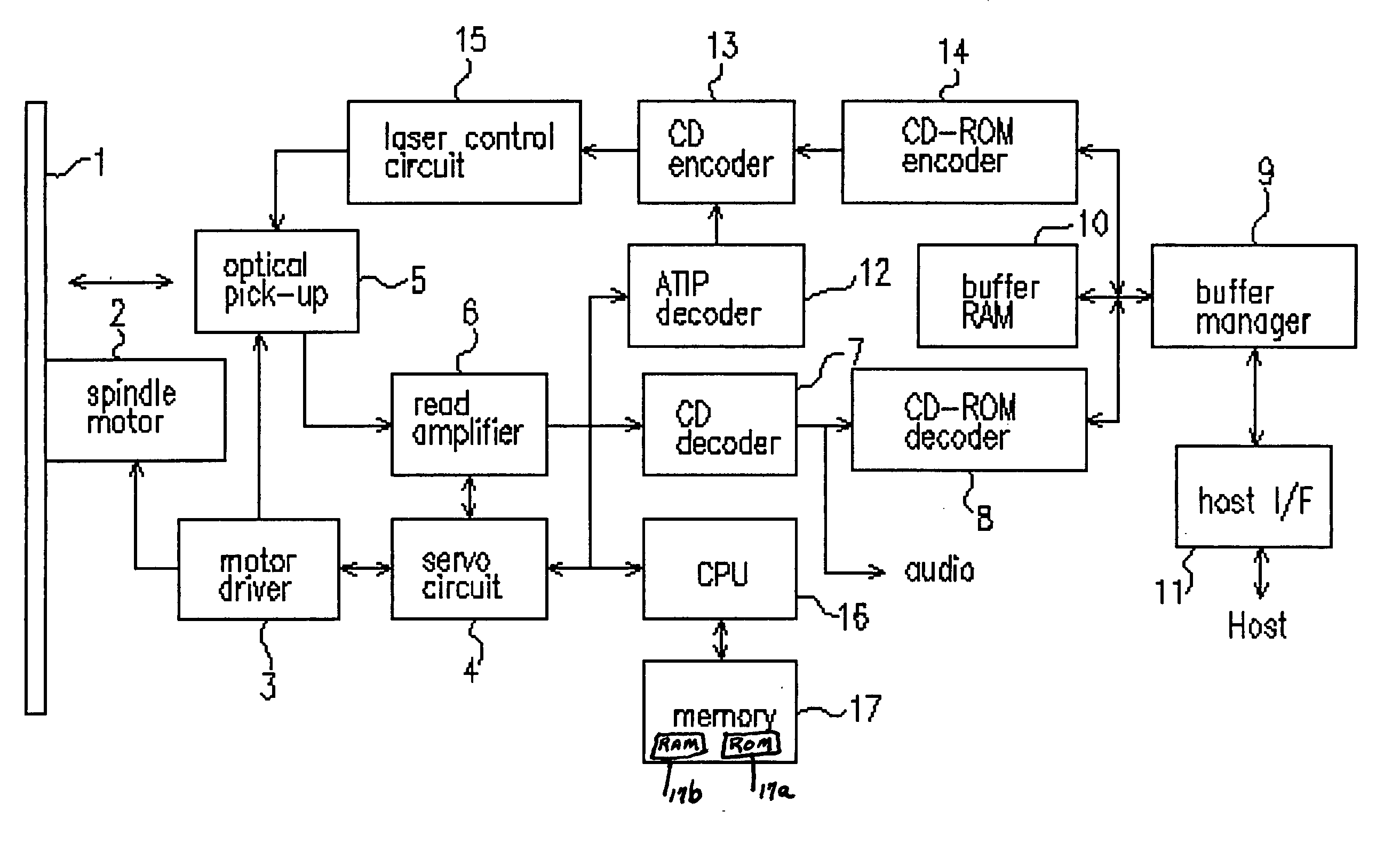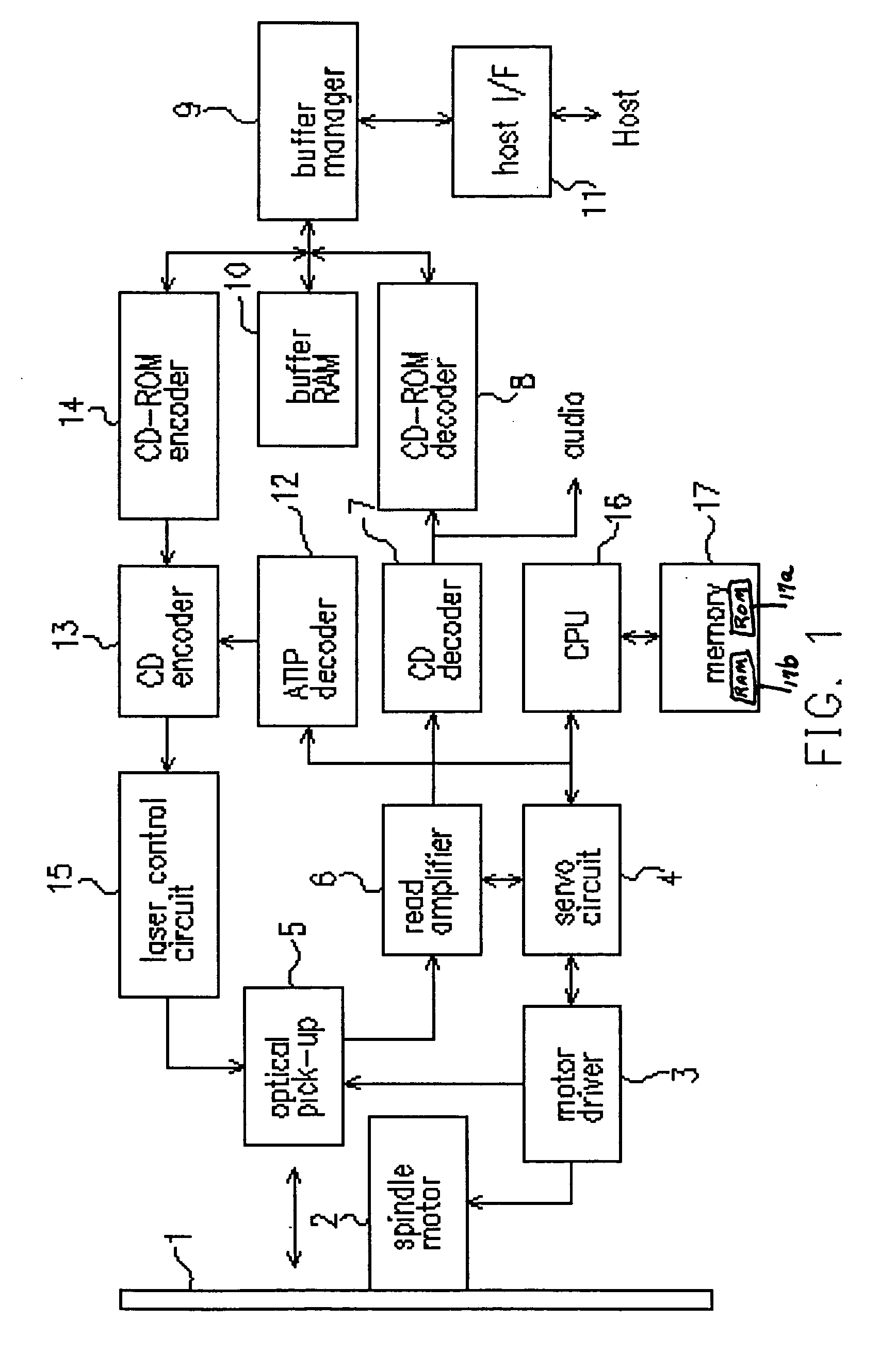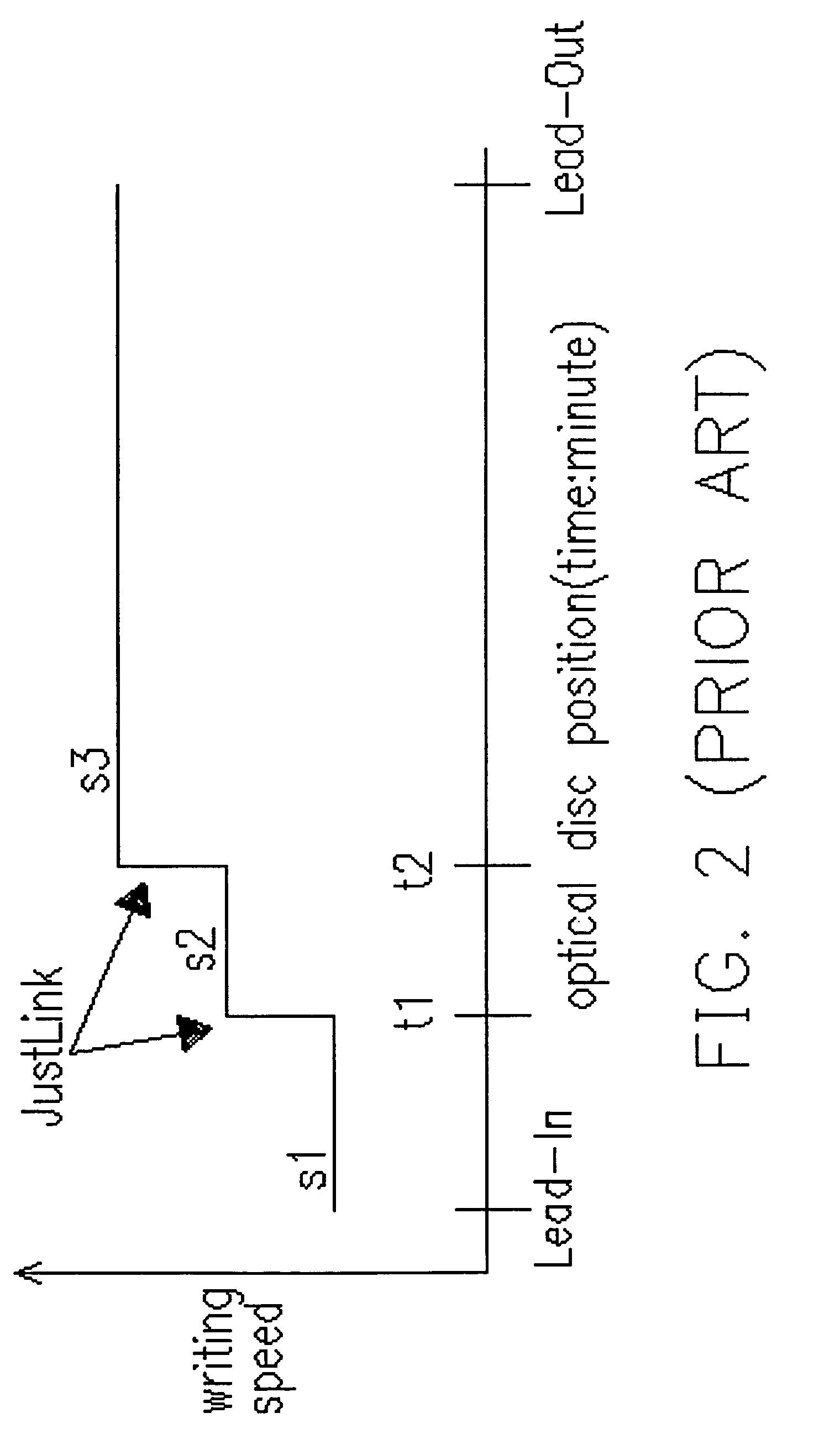Writing method for optical disc, processing method for information, optical disc apparatus, and information processing apparatus
a writing method and optical disc technology, applied in the field of information processing, can solve problems such as system itself becoming larger, easy to fall out of the track, and easy to write to the optical disc, and achieve the effects of reducing the size of the system, and reducing the number of optical discs
- Summary
- Abstract
- Description
- Claims
- Application Information
AI Technical Summary
Benefits of technology
Problems solved by technology
Method used
Image
Examples
first embodiment
[0118]FIG. 1 shows a schematic block diagram according to the first embodiment of the invention. The optical disc apparatus in the first embodiment is used for writing and / or reproducing information on an optical disc, such as the CD-RW. The optical disc 1 is driven to rotate by a spindle motor 2. The spindle motor 2 is driven and controlled by a motor driver 3 such that the optical disc 1 is rotated under the CLV or the ZCLV control.
[0119] A laser diode 5 emits a laser beam from a laser source, such as a laser diode. The laser beam is focused on a recording surface of the optical disc 1 (the recording medium). An actuator is controlled by a servo circuit 4 to perform a focusing servo control and a tracking servo control, thereby generating a reproducing signal to reproduce data recorded on the optical disc 1, or writing data on the optical disc 1.
[0120] When reproducing data, the reproducing signal obtained by the optical pick-up 5 is amplified by a read amplifier 6 and then digi...
second embodiment
[0135] Next, the second embodiment of the invention is described in detail as follows. The second embodiment performs a ZCLV writing, which is more elaborate than the first embodiment. The CPU 16 controls each element in FIG. 1 to execute the following process. As the optical disc 1 is inserted to the optical disc apparatus, a Read TOC operation is performed to read the ATIP code in the lead-in area on the optical disc1, so that the information such as the maker and the disc type etc are read. The CPU 16 determines the type of the optical disc 1 according to the ATIP signal (ATIP code) from the ATIP decoder 12. In the second embodiment, the type of the optical disc 1 is assumed to a phthalo-type disc by “A” company. Refer to FIG. 6, a table where the maximum writing speed for each type of the optical disc 1 is stored in the memory 17. The CPU 16 refers to the table in FIG. 6 to determine the maximum writing speed for each type of the optical disc 1.
[0136] As described above, becaus...
third embodiment
[0142] Next, the third embodiment of the invention is described in detail as follows. The third embodiment performs a ZCLV writing, which is more elaborate than the second embodiment. The CPU 16 controls each element in FIG. 1 to execute the following process. As the optical disc 1 is inserted to the optical disc apparatus, a Read TOC operation is performed to read the ATIP code in the lead-in area on the optical disc1, so that the information such as the maker and the disc type etc are read. The CPU 16 determines the type of the optical disc 1 according to the ATIP signal (ATIP code) from the ATIP decoder 12. In the second embodiment, the type of the optical disc 1 is assumed to a phthalo-type disc by “A” company. Referring to FIG. 6, a table where the maximum writing speed for each type of the optical disc 1 is stored in the memory 17. The CPU 16 refers to the table in FIG. 6 to determine the maximum writing speed for each type of the optical disc 1.
[0143] As described above, bec...
PUM
| Property | Measurement | Unit |
|---|---|---|
| writing power | aaaaa | aaaaa |
| writing power | aaaaa | aaaaa |
| speed | aaaaa | aaaaa |
Abstract
Description
Claims
Application Information
 Login to View More
Login to View More - R&D
- Intellectual Property
- Life Sciences
- Materials
- Tech Scout
- Unparalleled Data Quality
- Higher Quality Content
- 60% Fewer Hallucinations
Browse by: Latest US Patents, China's latest patents, Technical Efficacy Thesaurus, Application Domain, Technology Topic, Popular Technical Reports.
© 2025 PatSnap. All rights reserved.Legal|Privacy policy|Modern Slavery Act Transparency Statement|Sitemap|About US| Contact US: help@patsnap.com



